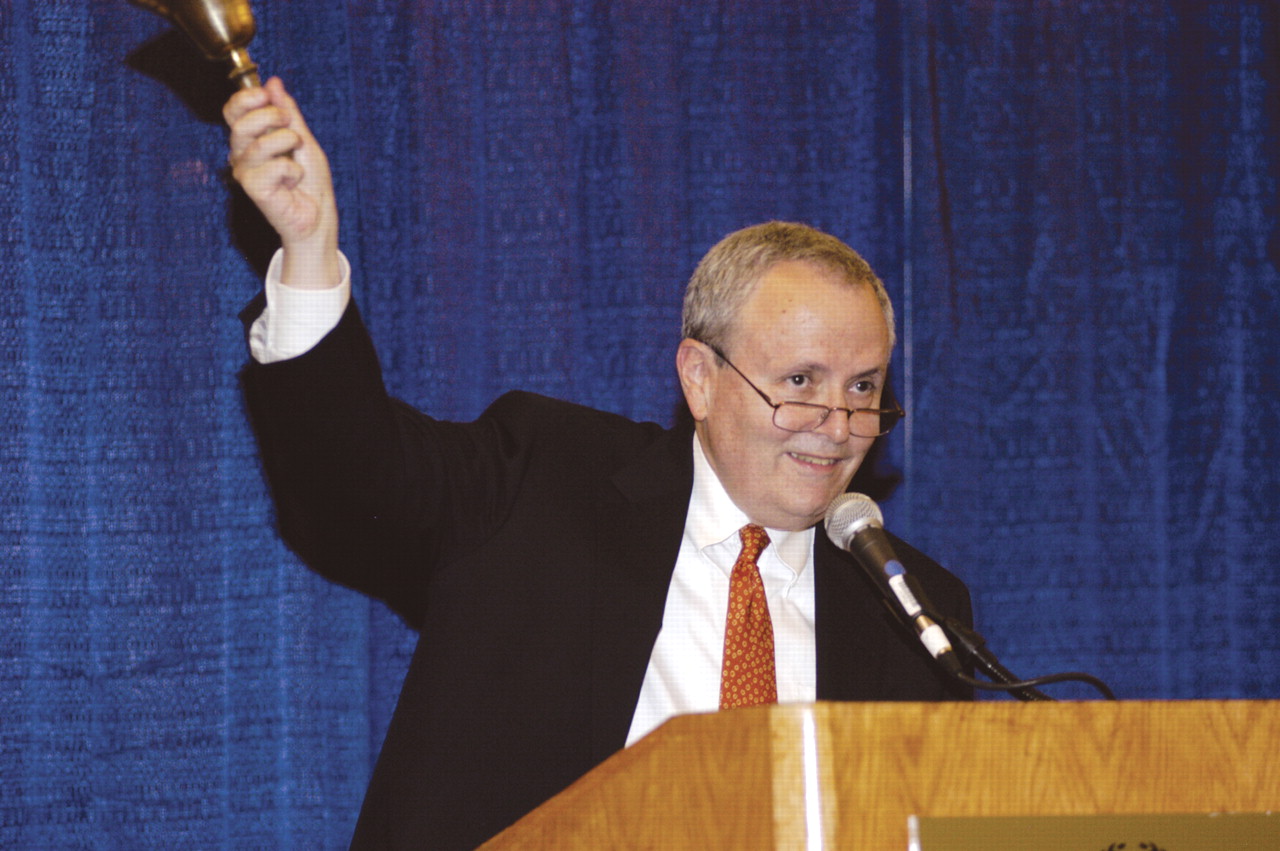From neighborhood psychiatrist to hospital executive, APA President Steven Sharfstein, M.D., has followed a career path over the past four decades encompassing virtually every major development in the treatment of mentally ill individuals and illuminates how psychiatry has been shaped by a confluence of science, politics, and economics.
In his opening address at APA's 57th Institute on Psychiatric Services in San Diego last month, and in a later lecture there, Sharfstein sketched the outlines of a career from early training in the psychoanalytic tradition, through social engagement in the pioneering days of the community mental health movement, to president and CEO of a revered hospital that began to transform itself in the late 1980s in the era of managed care.
Today, Sharfstein said, the ethical psychiatrist operates in a“ clinical gray zone” in which a continuum of therapies—from intensive inpatient to partial hospitalization to day treatment and outpatient therapy utilizing a variety of approaches—can be tailored to the individual for the most cost-effective outcome.
“Guidelines encompass areas of treatment where there is no black or white approach,” said Sharfstein, president and CEO of Sheppard Pratt Health System in Baltimore, Md. “Instead there is a range of treatment approaches that are biological, psychosocial, short term, or long term. The ability and willingness of clinicians to try new treatments and adapt to new payment systems, and therefore shift their practice over time, depend on the terrain of the clinical gray zone.”
Engaging at Neighborhood Level
In opening remarks at the institute, whose theme was “Community and Recovery,” Sharfstein described his origins as a community psychiatrist at the Massachusetts Mental Health Center in the heyday of psychoanalysts Elvin Semrad, M.D., and Jack Ewalt, M.D.
An early “romance” with psychoanalysis evolved into an interest in a more socially engaged psychiatry, and it was at the Massachusetts Mental Health Center that Sharfstein helped to put into practice the concept of“ neighborhood psychiatry.” As a second-year resident in a federally funded neighborhood health center in Jamaica Plain—part of the catchment area served by the center—Sharfstein served as both primary care physician and psychiatrist.
“I became familiar with and excited about providing services to deinstitutionalized and chronically ill individuals in their homes and neighborhood,” he recalled. “I worked with acutely distressed families and individuals with a range of psychiatric problems in this working-class neighborhood.”
It was during this period that Sharfstein witnessed a major tipping point in the history of psychiatry—the approval of lithium for manic-depressive illness.
“I admitted a patient suffering from acute mania with numerous previous admissions as part of his unstable bipolar illness,” Sharfstein recalled. “I presented the patient to Dr. Semrad and asked for his permission to try lithium. I will never forget his answer: `How is it that you cannot sit with this patient?'
“Three and a half months later, when the FDA approved lithium in 1970, I started [the patient] on lithium therapy, and his dramatic improvement allowed me to do some psychotherapy with him,” Sharfstein said. “I became a firm convert to the efficacy of mood stabilization by pharmacological means after this experience. The paradigm shift in American psychiatry from psychoanalytic to psychobiological began in earnest after lithium approval.”
Playing Havoc in Clinical Gray Zone
But 35 years later, Semrad's question—How is it that you cannot sit with this patient?—resonates anew.
Sharfstein cited 2001 data from APA's Practice Research Network showing that only 37 percent of bipolar patients who were in outpatient treatment with psychiatrists and who had indications for psychotherapy were receiving it.
In the era of managed care, Sharfstein asserted, the clinical gray zone in which psychiatrists work has been a target for manipulation. Managed care“ has played havoc... by insisting on the least costly alternative and successfully reducing the cost of care to the payers, especially employers.”
Managed care organizations have focused on what is known in economic circles as “efficiency risk”—the cost-benefit ratio of treating a group or category of patients—at the expense of what might be good for individual patients, Sharfstein observed.
He cited the example of 28-day hospital stays for substance abuse treatment, an approach that proliferated in the 1980s with little or no evidence for the efficacy of that “magical” timeframe. The 28-day program was in time managed virtually out of existence—even as health plans failed to offer less-intensive therapies.
“Treating all patients with substance use disorders with 28-day programs is clearly wasteful,” he said. “Having no inpatient coverage, however, for such patients is clearly risky.”
Optimistic About Future
Today, Sharfstein said, modern clinicians have more options than ever for individualizing care across the clinical gray zone.
These include combinations of medications and psychotherapy; dialectical-behavior therapy for patients with borderline personality disorder; cognitive-behavioral therapy for depression, anxiety, and residual symptoms of schizophrenia; family education for patients with schizophrenia living at home; assertive community treatment; supported employment; and multimodal treatment of children with attention-deficit/hyperactivity disorder. And in the era of the “recovery movement,” there is a widening recognition that treatment works.
“Despite the efforts of payers and their managed care hired guns to reduce and constrain care, there is a sense of rising expectations in society for effective psychiatric care,” Sharfstein said. “This is a very good time in the field. More medical students from American medical schools are selecting psychiatry over the last few years, and they are doing so for a reason. Patients get better with treatment, we can make a good living, and the work has never been more interesting.” ▪


